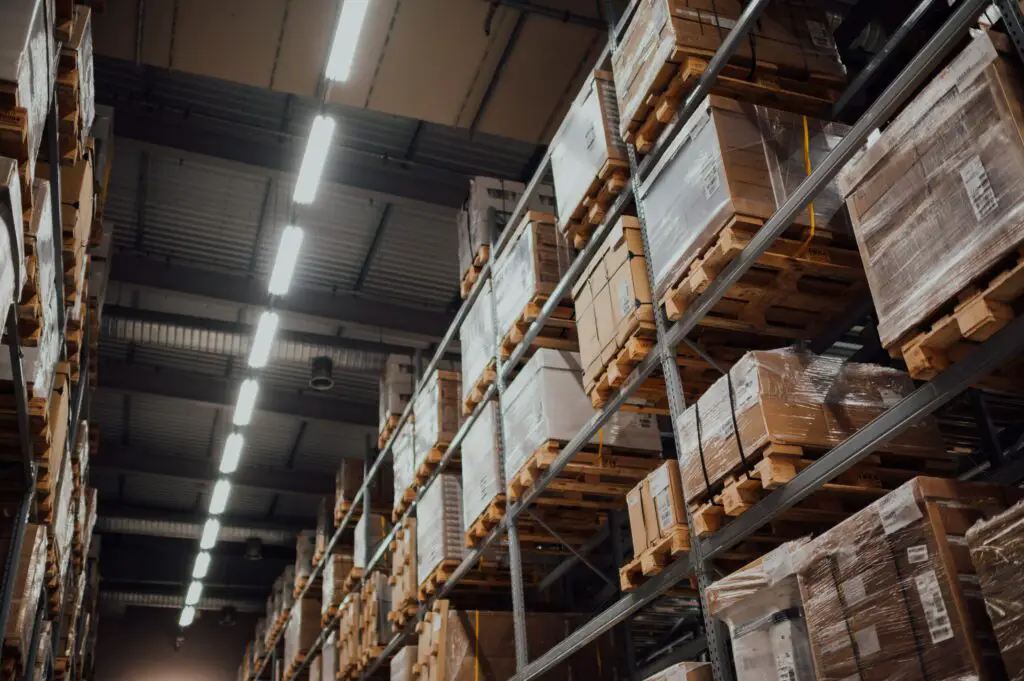The Pitfall of Overstocking:
A Warehouse’s Bane
The Illusion of Surplus
In the labyrinth of commerce, the tantalizing prospect of overstocking often appears as a beacon of security, a fortress against the tides of scarcity. Yet, beneath this facade lies a paradox—the excess that seems to fortify can, in truth, corrode the very essence of efficiency. Warehouses, repositories of abundance, fall victim to this deceptive allure, often ensnared in the web of overstocking’s perils. To truly fathom the intricate downfall of this practice, one must traverse the labyrinth of logistics, unmasking the nuances that render overstocking an ineffectual sentinel against operational woes.

Costly Inertia:
The Burden of Deadstock
A warehouse, bedecked in superfluous stocks, harbors a silent predator: deadstock. The siren song of overstocking, entwined with economic fallacy, incites the accumulation of goods that languish untouched. Each dormant item embodies a silent financial drain—a capital investment bound in stasis. The insidious cost of storage, both tangible and intangible, swells with every idle item, shackling financial resources and confining operational agility. The illusion of security shatters as the burden of deadstock eclipses profit margins, obscuring the path to optimal fiscal health.
Yet, the toll extends beyond the tangible realm. Deadstock casts an ethereal shadow, ensnaring valuable space and cognitive bandwidth. A surplus of goods not only clogs physical shelves but also clutters the mental landscape of strategic decision-making. The opportunity cost of clinging to idle inventory blinds one’s gaze to agile market shifts, hindering the adaptability crucial for sustained competitiveness.
A Symphony Disrupted:
The Chaos of Overstocking
The symphony of efficient logistics thrives on harmonious orchestration—a delicate balance between supply and demand, rhythmically conducted to meet consumer cadences. However, overstocking disrupts this melodic equilibrium, introducing dissonance into the symphony of operations. The surplus, initially perceived as a fortification, paradoxically becomes a discordant note, unsettling the rhythm of the warehouse’s functionality.
The repercussions ripple through the entire logistics ecosystem. Excessive inventory inflates lead times, distorts demand forecasts, and muddles the procurement process. The orchestration, once fluid, stutters under the weight of surplus, amplifying inefficiencies and breeding an atmosphere of disarray. The myth of overstocking’s protective embrace shatters as the logistical symphony falters, drowned in the cacophony of imbalance.
Dilution of Value:
Erosion Amidst Abundance
The allure of overstocking whispers promises of abundance, yet paradoxically heralds the erosion of value. The intrinsic worth of goods, ensconced in surplus, undergoes a subtle devaluation—an erosion of perceived value in the eyes of consumers. A surplus floods the market, diluting the exclusivity and allure that scarcity often fosters. The perceived worth diminishes amidst plenty, transforming coveted items into commonplace commodities.
This dilution of value inflicts a dual wound. Firstly, it undermines the allure of products, tarnishing brand appeal and compromising profit margins. Secondly, the accumulation of surplus fosters an environment ripe for depreciation. Goods, once coveted, depreciate swiftly amidst overabundance, further amplifying financial losses and eroding the bedrock of profitability.
Operational Gridlock:
Shackles of Overstocking
The logistical dance within a warehouse hinges upon fluidity—swift movements and agile adaptations. However, the illusion of security perpetuated by overstocking entangles the operational machinery in the shackles of gridlock. The surplus becomes a logistical labyrinth, impeding the flow of goods and choking the arteries of efficiency.
Space, the hallowed ground of logistics, succumbs to the excess. Storage facilities, cluttered with surplus, metamorphose into mazes, impeding access and hindering the retrieval of vital stock. The operational cadence falters as congestion pervades, rendering once-efficient processes sluggish and convoluted. The illusion of ample resources, paradoxically, strangles the very operational agility that is the cornerstone of competitive edge.
Environmental Impact:
The Toll of Excess
Beneath the veneer of surplus lies an environmental toll—a silent, yet poignant repercussion. The surplus, a testament to overstocking’s allure, exacts a toll on ecological equilibrium. Each idle item, nestled within warehouse confines, symbolizes resources expended—materials extracted, manufactured, and transported—now dormant and purposeless.
The ecological footprint of overstocking transcends the warehouse walls. Excessive production to meet the mirage of demand exacerbates environmental strain, depleting finite resources and amplifying carbon footprints. The surplus, a transient illusion of security, leaves an indelible mark on the planet’s fabric, underscoring the environmental cost entwined within the deceptive allure of overstocking.
The Paradox of Choice:
Consumer Dilemma
Amidst the plethora of choices, the consumer faces a paradox—a labyrinth of options obscured by overstocking’s deceptive allure. A surplus, once heralded as a boon, metamorphoses into a maze of decision paralysis. The myriad options, seemingly promising freedom, ensnare the consumer in a web of indecision.
The illusion of choice becomes a burden, overwhelming rather than empowering. The surplus inundates the consumer psyche, diluting the significance of each option and breeding apathy amidst abundance. Decision-making, a cornerstone of consumer agency, falters under the weight of surplus, eroding the very empowerment it aimed to foster.
Evolutionary Stagnation:
Impeding Innovation
The mirage of security offered by overstocking obscures a stark reality—the impediment it poses to innovation. Surplus engenders complacency, stifling the imperative for adaptive evolution. The cushion of excess lulls businesses into a false sense of stability, disincentivizing the quest for innovation and improvement.
The cycle of surplus stifles innovation at its core. The resources, entangled in idle inventory, could have fueled research and development, fostering transformative breakthroughs. Yet, the allure of overstocking throttles this potential, stagnating the evolutionary journey towards novel solutions and competitive advancements.
The Ephemeral Mirage:
The Myth of Security
In the tapestry of commerce, overstocking masquerades as a bastion of security—a mirage promising refuge against scarcity’s tempestuous currents. Yet, within its transient embrace lies a paradox—an illusory haven that crumbles upon scrutiny. The perceived safety dissipates, revealing the perils that lurk within the surplus.
The paradoxical allure of overstocking, a testament to human penchant for abundance, ensnares warehouses in a labyrinth of inefficiency. Deadstock burdens financial health, operational fluidity wanes, and the allure of surplus erodes value, fostering environmental strains. Consumer choice wanes amidst surplus, innovation stagnates, and the mirage of security dissipates, leaving behind the ephemeral remnants of a myth.
